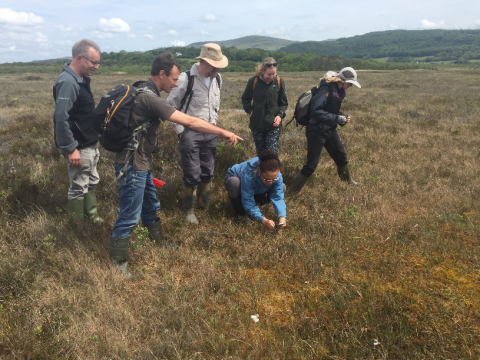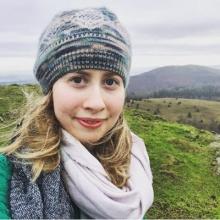The Great British bog off – how can modelling help us to conserve our wild peatland plants?
Peatlands are unique and important ecosystems in the UK that host a variety of plant and animal life, store huge amounts of carbon and provide us with benefits like flood mitigation. BioSS has been working for the past year or two on developing a model of plant life on peatland bogs to help us make decisions for their future.

Challenges
Peatlands are hugely important ecosystems in the UK, responsible for storing 3 billion tonnes of CO2 – that’s twice as much as our forests! Unfortunately, they are also hugely degraded and vulnerable to climate change.
Peatlands evolve and change over long timescales (millennia), but site managers need to know how plants will respond to climate and land-use change in the short term (next century).
Plant species on peat bogs are varied and unique! They contribute to the healthy functioning of the bog and create habitats for wild animals, like birds and butterflies.
One such site is Cors Fochno, a raised bog in Wales with a history of drainage, peat cutting and subsequent restoration. How will the plants on a bog like this survive in the future?
Solutions
Models are very useful tools that can help decision makers by presenting a range of different scenarios for the future and how different decisions might impact this.
BioSS has already worked extensively with the University of Glasgow and Natural History Museum London to develop a simulator for plant biodiversity, EcoSISTEM. This model takes in information about the climate and habitat in which plants live and simulates how they might live, die, compete and spread under these conditions.
We are currently working to develop a virtual peatland ecosystem for Cors Fochno in which we can include the diversity of plant life that lives there and make predictions for how they might respond to future climate change or different management decisions.
For example, using future predictions of rainfall, we can look at which plants survive and which go extinct. A shift from peat forming mosses to drier-loving shrubs and trees would be hugely detrimental to the functioning of the bog. We can also add different restoration efforts to the model, like blocking up drainage ditches, to see if these might help.
In order to do this, we need to collect together lots of data and expertise: on the plants themselves, e.g. what species are present and how do they live, the characteristics of the site, and environmental information such as water levels and soil types. We also need a great deal of work on developing the model code so that it can behave in a similar way to real plants on a peat bog. This means we need to talk to many different experts, including botanists, hydrologists, site managers, and more!
Future goals
The UK hosts a wealth of peatland sites to which we hope to extend our model. There are a lot of data and expertise on our bogs here in Scotland that we will draw upon to continue this work. We will also continue to work with our collaborators in Wales to make the virtual bog ecosystem as realistic as possible so that we can start to answer some of their questions.
Publications:
Lots of resources on peatlands can be found on the IUCN Peatland Programme website: https://www.iucn-uk-peatlandprogramme.org/about-peatlands/uk-peatlands
Natural Resources Wales’ National Peatland Action Programme: https://naturalresources.wales/evidence-and-data/maps/the-national-peatland-action-programme/?lang=en
And NatureScot’s Peatland ACTION: https://www.nature.scot/climate-change/nature-based-solutions/peatland-action-project
Keep your eyes peeled for publications on this work from BioSS in the future!
Acknowledgements
Glenn Marion, Christina Cobbold, Richard Reeve, Neil Brummitt, Ana Claudia Araujo, Ben Scott, Justin Lyons, Jon Walker, Kathryn Birch, Natural Resources Wales, PeatlandACTION, NERC Landscape Decisions, Scottish Government RESAS programme, University of Glasgow, BioSS, Natural History Museum London, James Hutton Institute.

